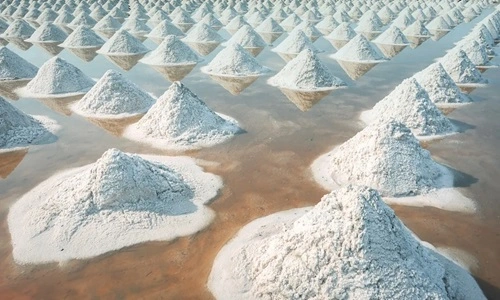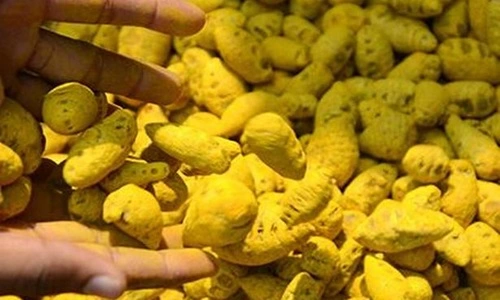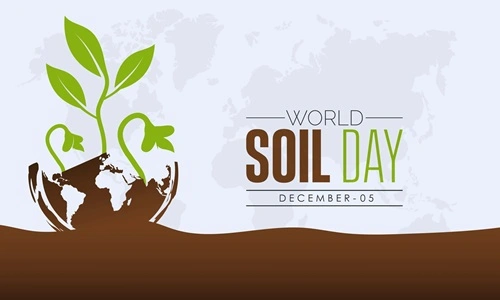Salt is for sure one basic ingredient that can easily be found in literally every single household in the entire world. And to be honest, Indians are a bit fond of salt as it is a daily used ingredient in the country in different forms such as black salt and rock salt. But where does all this salt come from, does India import this salt from other countries, or the case is something else? Well, let’s find that out. Here we will be taking a good look at the top 5 most salt-producing states in India as of 2024, so you’ll know where all that salt is coming from. Alright, let’s get going.

1. Gujarat (76%)
Gujarat is the top state in India for making major salt, producing 76% of the country’s total. The other critical reasons are that there are wide dry spots, and long-standing skills in salt production have been developed, mainly through the use of the sun’s heat in places like Little Rann of Kutch. Though, changes in the weather, like more cyclones and even longer rainy seasons, are hurting production. These problems cause large financial losses and damage to facilities, affecting large companies to local salt workers who depend on this work to live.
2. Tamil Nadu (12%)
Tamil Nadu makes up 12% of India’s salt output. Most of its salts come from places like Tuticorin, where recently salts were produced to the tune of 20 lakh tons. Thus, good weather with solid winds and hot summers helps to make salt here in the state. However, the level of competition and the availability of excessive salt in the market at very cheap rates pull down the price for salt. This puts financial pressure on local salt makers and challenges the old ways of making salt here.
3. Rajasthan (8%)
Rajasthan accounts for 8% of the salt made in the country. It mostly comes from the Sambhar Salt Lake, one of India’s biggest inland salt lakes. The region has undergone many years of history, mostly under the control of the government company, Sambhar Salts Ltd, for salt production. Nevertheless, the lake faces a major problem: the water level is very changeable due to poor rains, coupled with human activities. In addition, human activities such as illegal mining of salt, excessive use of water wells, and environmental contributions also have a role in the reduction of salt production. Steps are being taken to fix these issues and protect this important economic resource.
4. Andhra Pradesh (2.28%)
Andhra Pradesh contributes 2.28% to India’s salt production, particularly from the Naupada area in Srikakulam district. Government policies and lack of support in subsidies and transport have reduced the land used for salt-making from over 6000 acres to about 2000 by not renewing land agreements. This has affected the incomes of the local salt farmers and the produced volume of salt very badly.
5. Maharashtra (1.72%)
Maharashtra makes 1.72% of India’s salt, mainly in the Mumbai and Raigad districts. But, the state faces challenges from urban growth, with large tracts of salt-making land in the state currently witnessing redevelopment plans, including the likes of the Dharavi redevelopment project. This change threatens traditional salt-making areas, with the possible relocation of populations and their traditional ways of salt production, therefore creating a conflict between city growth and keeping industrial traditions.
FAQs
Q1. What is the main source of salt in India?
Ans: In India, salt comes from seawater, lake water, underground water, and rock salt found in the earth. In Gujarat, a lot of the salt is produced from lakes and the sea.
Q2. Who is the world’s largest producer of salt?
Ans: China makes the most salt in the world. In 2023, they made 53 million metric tons. The United States made 42 million metric tons, making it the second-biggest salt produced.
Q3. Who exports salt to India?
Ans: In 2022, India bought $12.5 million worth of salt. Most of it came from the United Arab Emirates ($3.37 million), Iran ($3.29 million), Spain ($1.15 million), the United States ($795,000), and Germany ($733,000).
Q4. Does India have a tax on salt?
Ans: India had a salt tax after becoming independent, but it was replaced in 1953. This tax was removed when the Goods and Services Tax (GST) was introduced in 2017, and now salt is not taxed.
Q5. Do Indians eat the most salt in the world?
Ans: An average adult in India eats 8 grams of salt every day. This is more than the 5-gram limit recommended by the World Health Organisation (WHO). This information comes from a survey by the Indian Council of Medical Research, published in Nature Portfolio.

